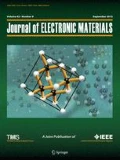Abstract
A thermoelectric generator typically delivers a relatively low power output, and hence it is of great practical importance to determine a design and operating condition close to those which can provide the maximum attainable power. To maintain a favorable condition for the maximum power output, power electronics circuits are usually applied. One of the simplest methods is to control the operating voltage at half the open-circuit voltage, assuming that the typical impedance-matching condition, in which the load and internal resistances are matched, yields the maximum power output. However, recent investigations have shown that, when external thermal resistances exist between the thermoelectric modules and thermal reservoirs, the impedance-matching condition is not identical to the condition for the maximum power output. In this article, it is argued that, although the impedance-matching condition is not the condition for maximum power output, the maximum power is still achievable when the operating voltage is kept at half the open-circuit voltage. More precisely, it is shown that the typical V–I curve for thermoelectric generators must show approximately linear behavior, which justifies the use of a simple strategy in thermoelectric power generation applications. The conditions for the validity of the approximation are mathematically discussed, supported by a few examples. Experimental evidence at room temperature is also provided.
Similar content being viewed by others
References
I.-H. Kim, Mater. Lett. 43, 221–224 (2000)
R. Venkatasubramanian, E. Siivola, T. Colpitts, B. O’Quinn, Nature 413, 597–602 (2001)
M. Takashiri, T. Shirakawa, K. Miyazaki, H. Tsukamoto, Sens. Actuator A 138, 329–334 (2007)
P.M. Mayer, R.J. Ram, Nanoscale Microscale Thermophys. Eng. 10, 143–155 (2006)
M. Gomez, R. Reid, B. Ohara, H. Lee, J. Appl. Phys. 113, 174908 (2013)
R. Faranda, S. Leva, and V. Maugeri, Power and Energy Society General Meeting—Conversion and Delivery of Electrical Energy in the 21st Century, 2008 IEEE, (2008) pp. 1–6. doi:10.1109/PES.2008.4596156
G.S. Nolas, J. Sharp, H.J. Goldsmid, Thermoelectrics: Basic Principles and New Materials Development (Berlin: Springer, 2001)
K. Yazawa, A. Shakouri, J. Appl. Phys. 111, 024509 (2012)
R. McCarty, J. Electron. Mater. 42, 1504–1508 (2013)
J. Gao, K. Sun, L. Ni, M. Chen, Z. Kang, L. Zhang, Y. Xing, J. Zhang, J. Electron. Mater. 41, 1043–1050 (2012)
Author information
Authors and Affiliations
Corresponding author
Rights and permissions
About this article
Cite this article
Youn, N., Lee, H., Wee, D. et al. Achieving Maximum Power in Thermoelectric Generation with Simple Power Electronics. J. Electron. Mater. 43, 1597–1602 (2014). https://doi.org/10.1007/s11664-013-2804-8
Received:
Accepted:
Published:
Issue Date:
DOI: https://doi.org/10.1007/s11664-013-2804-8


